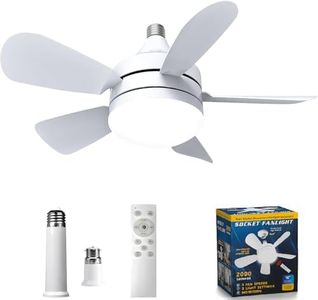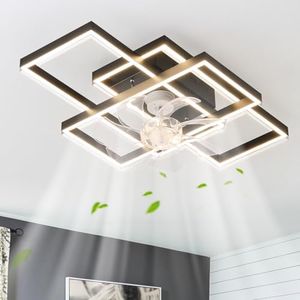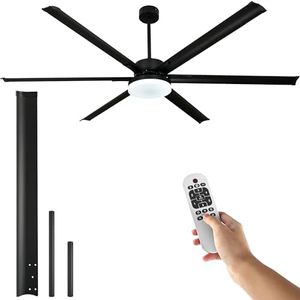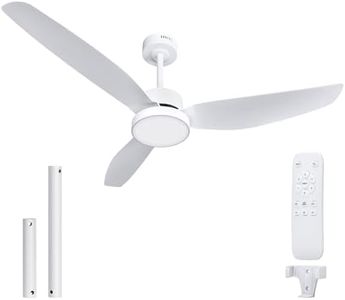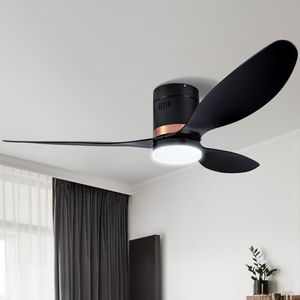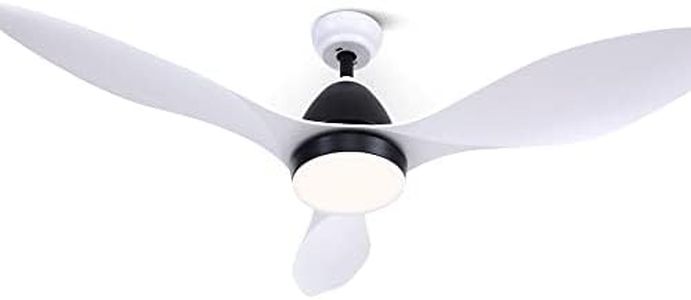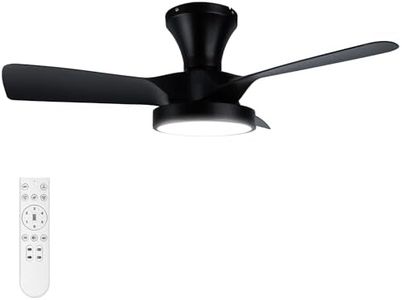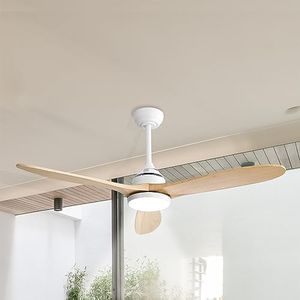We Use CookiesWe use cookies to enhance the security, performance,
functionality and for analytical and promotional activities. By continuing to browse this site you
are agreeing to our privacy policy
10 Best Ceiling Fans
From leading brands and best sellers available on the web.By clicking on a link to a third party's website, log data is shared with that third party.
Buying Guide for the Best Ceiling Fans
Choosing the right ceiling fan can create a more comfortable living space, save on energy bills, and even enhance the look of your room. The key to shopping for a ceiling fan is understanding your needs—consider the size of your room, your climate, and the aesthetics you prefer. It's also important to keep in mind how often you'll use the fan and whether you want additional features like lighting or remote control. Focusing on the main specifications will help you navigate the many options available and select the best fit for your space.Fan Size (Blade Span)Blade span, sometimes known as fan size, refers to how wide the fan measures from the tip of one blade to the tip of the blade directly across. This is important because it determines how much air the fan can move, affecting its ability to cool a space. Small blade spans (less than 36 inches) are best for small rooms like bathrooms or kitchens. Medium spans (36-52 inches) suit bedrooms and living areas, while large spans (over 52 inches) work best in big spaces like large living rooms or open-plan areas. To pick the right size, measure your room and match it to the recommended blade span for that square footage.
Number of BladesThe number of blades on a ceiling fan can influence both the appearance and the airflow. Fans typically have three to five blades. More blades often mean quieter operation but can slightly reduce airflow, while fewer blades can circulate more air with a bit more noise. The differences are usually small, so your choice here can be guided by what style you like and whether you value quietness over airflow strength, or vice versa.
Motor Type and EfficiencyThe motor powers the fan and impacts both its energy efficiency and noise level. Fans have either standard AC motors or more advanced DC motors. DC motors are typically quieter and use less energy, which can be ideal if you plan to run the fan for long periods. AC motors usually cost less and can be fine for occasional use. Consider how often you’ll use the fan and how important electricity savings or quietness are to you when choosing a motor type.
Airflow (CFM)Airflow is measured in cubic feet per minute (CFM), which tells you how much air the fan can move. Higher CFM means better airflow, which is important in larger rooms or warmer climates. Lower CFM fans are suitable for small spaces or areas where only gentle circulation is needed. Be sure to match the fan’s airflow rating to the size of your room and how much cooling you expect.
Mounting OptionsMounting refers to how the fan is installed and how close it will hang from the ceiling. There are three main types: flush mount (hugger) fans for low ceilings, standard downrod mounts for most regular-height ceilings, and extended downrods for very high or vaulted ceilings. To pick the right mounting, measure your ceiling height and make sure your fan will be at the optimal height above the floor, usually about 8-9 feet.
ControlsCeiling fans can be controlled by pull chains, wall switches, or remote controls. Remote controls offer the most convenience, especially for high ceilings or large rooms. Wall switches add simplicity, while pull chains are basic and reliable for smaller spaces. Consider who will use the fan and how convenient you want controls to be in your home.
Light KitSome ceiling fans come with built-in lights or compatible light kits, which can be a great way to combine lighting and airflow in one fixture. If your room needs additional lighting, choosing a fan with an integrated or compatible light kit is a smart move. However, if you have plenty of lighting already or prefer a cleaner look, select a fan without lights.
Style and FinishCeiling fans come in many styles and finishes, from modern to traditional, and in colors from dark woods to white or metallic tones. While this doesn’t affect function, it’s important for how your fan will blend with the rest of your decor. Choose a style and finish that matches or complements your room’s look and feel to ensure your ceiling fan adds to your space rather than standing out awkwardly.
